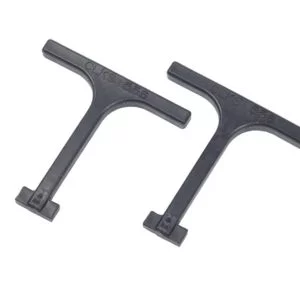No products in the basket.

Cromar PVA Glue Adheive and Sealer 5L
Rated 5.00 out of 5 based on 1 customer rating
(1 customer review)
100% of buyers said they were satisfied.
£11.20 Incl. VAT£9.33 Excl. VAT
Cromar PVA Glue Adhesive and Sealer 5L
Fast Shipping
All orders are shipped in 1-3 business days.
Secure Checkout
SSL Enabled Secure Checkout
Satisfaction Guarantee
Easy 30-day return policy.
Top Rated Customer Service
We are the highest rated online merchant!
Buy Cromar PVA Glue Adhesive and Sealer 5L at EM
Polyvinyl Acetate suitable for most bonding applications around the home. Other uses: Primer/dust proofer, sealer, additive to cement to increase adhesive properties. For internal dry are use only.
What’s PVA glue used for? As an emulsion, soluble in water, it’s very useful for glueing porous substances, particularly for wood, paper and cloth. It does not include solvents and acts as a helpful consolidant for porous construction materials like sandstone. PVA adhesive is flexible, provides a very powerful bond and, unlike a lot of polymers, it is not acidic. PVA wood glue is most often used:
- For a wood adhesive
- for a paper, cloth and leather glue
- in bookbinding
- in crafts and arts, for example mosaic
- as envelope adhesive
- as background adhesive
- for a drywall primer
- as a filler, by adding sawdust for it
A mix of 50/50 PVA and water makes a very good sheeting for plaster, preparing it for painting or wallpapering. In addition, it can be utilized as a non-waterproof interior varnish, ideal for papier mache projects.
PVA is a low cost, water-based, non-toxic way to glue wood to itself. Wood adhesive is a particularly strong version of normal PVA, perfect for heavier tasks. It dries completely clear but you may also purchase pre-coloured versions which are not as visible on timber surfaces.
How to use PVA Glue:
- Squeeze the glue onto the surface of all the bits of wood you need to glue together
- Eliminate any excess or spills immediately using a damp cloth
- Use either a professional plastic spreader or a brush to spread a thin coating of glue on the face of both pieces of timber
- Push the bits together, rubbing the surfaces from side to side to eliminate trapped air and make sure the paste spreads evenly
- Catch a G-clamp or two and clamp the pieces firmly
- Leave it for 24 hours prior to taking the clamps off
- Sand off any dried excess glue
| Application | Commercial, DIY, Residential, Self-Build |
|---|---|
| Brand | Barretline |
1 review for Cromar PVA Glue Adheive and Sealer 5L
Add a review Cancel reply
This site uses Akismet to reduce spam. Learn how your comment data is processed.
Related products
Rated 4.00 out of 5
(1)
From £4.83 Incl. VATFrom £4.03 Excl. VAT



nigel lawrence (verified owner) –